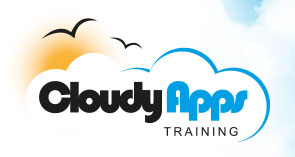


Developing Smart City applications - The art of combining hard and soft systems
Duration: 5 Days
Course Background
This 5 day workshop aims to provide insights into the practical problems that need to be tackled in the implementation and deployment of Smart City Applications. The approach is built partly around Use Cases and Scenarios, Specifying requirements and realising them and partly around approaches for dealing with complexity such as Checkland's Soft Systems methodology, issues of judgement as exemplified by Abercrombie's “The Anatomy of Judgment” and Vickery's “The Art of Judgement” as well as qualitative and quantitative modeling techniques. Case studies and demonstrations are used to illustrate possible approaches. It is assumed that organisations commissioning this course will want to specify the details of what is to be included in the course.
Course Prerequisites and Target Audience
Much depends on the interests and technical skills of the participants.
Starting Point Course Outline
- Foundational topics
- Exploring and sharing ideas via mind mapping and concept mapping
- The Art and Anatomy of Judgement
- Soft systems methodologies
- Complex systems and the art of the possible
- Use Case Analysis and the design of complex applications
- Frameworks and Patterns
- Cloud computing and a services oriented perspective to Smart City application development and deployment
- Smart sensors - capabilities and limitations
- Micro-controllers and embedded systems
- Capabilities
- Programming languages and Integrated Development Environments (IDEs)
- Network communication capabilities - wired and wireless
- Sensors and Digital Signal Processing
- Single core vs. multi-core
- Energy consumption
- Security
- Networking and distributed computing frameworks
- TCP/IP
- TinyOS
- 6loWPAN
- CAN
- DALI
- NFC (Near Field Communication) and RFID
- Smart cards
- Standards and programming
- Applications
- Integration with Smart Sensors
- Routing and Networking
- Overview of the ISO-OSI 7 layer model
- Understanding - Bridges, Gateways, Hubs, Switches and Routers
- Small local networks and PAN (Personal Area Network) networks
- AdHoc networks and Mobile AdHoc Networks (MANET) - architecture, protocols and routing
- IPv4 and IPv6
- TCP and UDP
- 6loWPAN
- TinyOS
- Data bases, data stores and data warehouses
- Relational databases - an overview
- Issues involved in handling and exploiting very large amounts of data
- Object Relational Databases
- Geographic Information Systems and Databases
- PostGIS and ArcGIS
- Data stores and data warehouses
- NonSQL and BigData - overview and concepts
- Hadoop and HBase
- Data cleaning, data fusion and data mining
- Data visualisation
- The psychology of communicating visual information
- Data visualisation tools and technologies
- R
- Matlab
- Matplotlib
- D3.js - Data Driven Documents
- Cybernetics approaches - concepts and applications
- Feedback and control systems
- Graphs and influence diagrams
- Social network graphs
- Recommender systems
- Group behaviour
- Psychology of group behaviour - an overview
- Politics, advertising and propaganda
- Social network graphs
- Self-defining groups
- Social Networking and smart cities
- SMS, Email, Facebook and Twitter
- SMS, Email, Facebook and Twitter APIs
- Getting smart sensors to SMS, Tweet, send emails, send to Facebook
- Cloud based smart sensor services
- Xively
- OpenTSDB
- ThingSPEAK
- Nimbits
- Smart sensor - rapid prototyping
- Arduino
- Arduino ADK
- Smart sensor operating systems
- Contiki
- TinyOS
- Running Contiki and TinyOS on ARM Cortex, MSP430 and Atmel AVR systems
- Dual core embedded systems
- Division of labour
- Possibilities and uses
- ARM Cortex M0 + ARM Cortex M3 - NXP LPC43xx processor case study